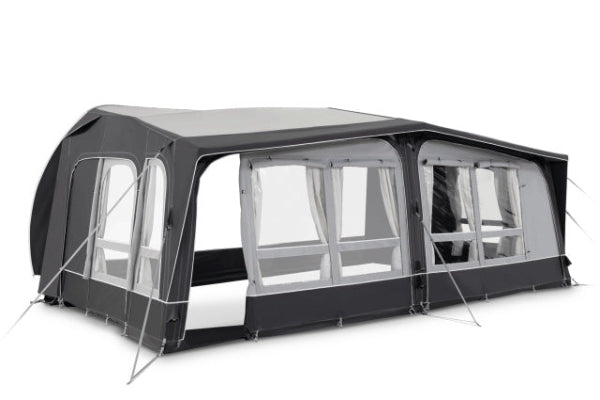Roofing a Shepherds Hut : The Ultimate Guide
Roofing a Shepherd's Hut? It's simpler than it sounds: prep the frame, lay your battens, insulate, and top it off with your chosen covering. Whether you're team thatch or team metal sheet, we’ve got you. Keep reading for tool tips, material picks, and step-by-step help (with fewer splinters).
Before You Start: Essential Tools and Materials
A Complete Checklist of What You'll Need
Before you dive in, get your tools and materials ready. Here’s a quick checklist to help you prepare:
-
Roofing battens
-
Corrugated metal sheets
-
Roofing felt or EPDM
-
Thatch or timber (for traditional styles)
-
Weatherproofing membranes
-
Insulation
-
Measuring tape, saw, drill, screws, sealant
-
Safety gear (gloves, goggles, mask)
Being well-prepared saves time and keeps things safer down the line.

Understanding Your Roofing Material Options (Corrugated Metal, etc.)
Traditional roofs often use thatch or wooden shingles. They look lovely, but can be high-maintenance.
Modern alternatives like corrugated metal, felt, or EPDM are more durable and easier to fit. Your decision should reflect your budget, preferred look, and willingness to maintain it.
Choose what suits your hut — and your patience.
Constructing the Curved Roof Frame
How to Create and Cut Curved Rafters or Trusses
Start with the frame. Use a jig or template to cut curved rafters or trusses accurately.
Precision is key here. Even small misalignments can affect the final curve of the roof.
Take your time.
Assembling the Rafters and Attaching Them Securely to the Walls
Once your rafters are cut, it’s time to fix them to the hut. Space them evenly along the frame.
Attach securely using brackets, screws, or coach bolts. This gives the roof a solid backbone.
Double-check alignment before you move on.
Creating the Under-Roof Layers for a Watertight Seal
Attaching the Plywood or OSB Sheathing to the Rafters
Next, lay down your sheathing. Plywood or OSB sheets create a firm base for the roof covering.
Attach them across the rafters, following the curve.
Fix them down securely. This strengthens the structure and gives a smooth surface to work with.

Applying a Breathable Waterproof Membrane (Like Tyvek)
Roll out your breathable membrane (Tyvek or similar) over the sheathing. This allows moisture to escape from inside but blocks rain from getting in.
Staple it into place and smooth out wrinkles.
It’s your first line of defence against water.
Installing the Final Roofing and Finishing Touches
Fitting the Corrugated Iron Sheeting
How to Correctly Overlap the Corrugated Sheets to Prevent Leaks
Start from the bottom edge of the roof and work upwards. Each sheet should overlap the one below it by at least one ridge.
This directs water downward and off the roof.
Overlap sideways too — about one full ridge. Consistent overlapping is what prevents leaks.
Securing the Sheets with Rubber-Washered Screws
Use rubber-washered screws to fasten the metal sheets to the battens.
The rubber washers create a watertight seal.
Work methodically across each sheet, starting from one end to avoid distortion or warping.
Keep the pressure firm but not too tight — overtightening can crush the seal.
How to Safely Cut Corrugated Metal to Size
To cut metal sheets, use tin snips, aviation shears, or a grinder fitted with a cutting disc.
Always wear eye protection and gloves.
Make sure your cuts are clean and accurate. Sharp edges should be filed smooth to prevent injury during installation.

Weatherproofing and a Professional Finish
Installing the Ridge Cap, Barge Boards, and Flashing
Top off your roof with a ridge cap to seal the peak. This protects where the two roof slopes meet.
Install barge boards on the side edges to neaten the finish and keep rain from sneaking in.
Add flashing anywhere water might try to get in — corners, edges, or joins.
Sealing Around a Wood Burner Flue
If you’re fitting a flue for a stove, it needs proper sealing. Use high-temperature flashing and a heat-resistant sealant.
The goal is a tight fit that handles both rain and heat.
Check for gaps and patch them right away.
Final Checks to Ensure Your Roof is Completely Watertight
Do a full walkaround and inspect every edge, joint, and screw point.
Apply extra sealant where needed.
Test the roof with a hose if you like — better to catch a leak now than during a storm.
Make sure guttering is fitted correctly to direct water away from the hut's base.
Other content you might like:
- What Is A Shepherds Hut
- Where To Buy A Shepherds Hut
- Do You Pay Council Tax On A Shepherds Hut
- Is A Shepherds Hut A Good Investment
- How To Sell A Shepherds Hut
- Are Shepherds Huts Mobile
- Are Shepherds Huts Warm
- How Long Do Shepherds Huts Last
- How To Transport A Shepherds Hut
- How Much To Rent A Shepherds Hut





Leave a comment